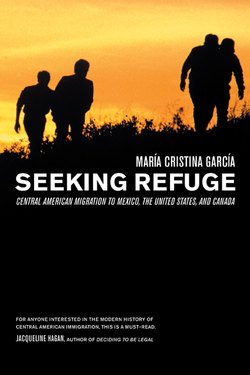Seeking Refuge

Реклама. ООО «ЛитРес», ИНН: 7719571260.
Оглавление
Maria Cristina Garcia. Seeking Refuge
Отрывок из книги
SEEKING REFUGE
Central American Migrationto Mexico, the United States, and Canada
.....
Various guerrilla groups operated during the 1960s and 1970s to challenge the dictatorships. In 1982, the four principal guerrilla armies joined to form the Guatemalan National Revolutionary Unity (URNG). Their platform included agrarian reform and price controls; equality between Indians and ladinos; democratic representation; and civil liberties such as freedom of expression and religion.67 The government tried to control the population and erode the guerrillas' popular base through special programs such as the euphemistically called frijoles y fusiles (beans and rifles) and techo, tortillas, y trabajo (housing, tortillas, and employment), which provided food and other aid in exchange for service in the patrullas de autodefensa civil (civilian defense patrols). At the height of the civilian patrol system, the patrullas counted nine hundred thousand members.68 The violence against the opposition reached new levels of barbarism from 1981 to 1984, during the governments of Generals Romeo Lucas García, Efraín Ríos Montt, and Oscar Mejía Víctores.69 The army burned fields and killed livestock to destroy the guerrillas' food supplies. Individuals remotely suspected of assisting the guerrillas, no matter how young, were viciously tortured and killed.70
The army called such actions “scientific killings” designed to eliminate the rebels' base of support. (Many of these atrocities were chronicled by Nobel Peace Prize winner Rigoberta Menchú in her controversial memoir I, Rigoberta Menchú.)76 Survivors and nearby villagers fled deeper into the mountains to avoid a similar fate, or crossed the border into southern Mexico, where they hoped to find refuge among kindred cultural groups. Those who appealed for amnesty or who were caught by the Guatemalan military and allowed to live were “reoriented”: interrogated for information on the guerrillas and then subjected to “reeducation” classes for twelve to fifteen hours every day for several months, where they were lectured on the “falsehoods” of the guerrillas' political campaign. Finally, in strategic areas, the so-called polos de desarrollo, inhabitants of towns and villages, were relocated to heavily patrolled “model villages,” where their actions were strictly regulated.77
.....